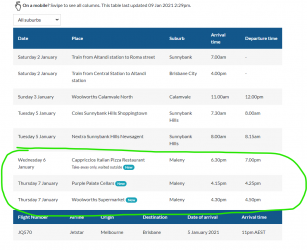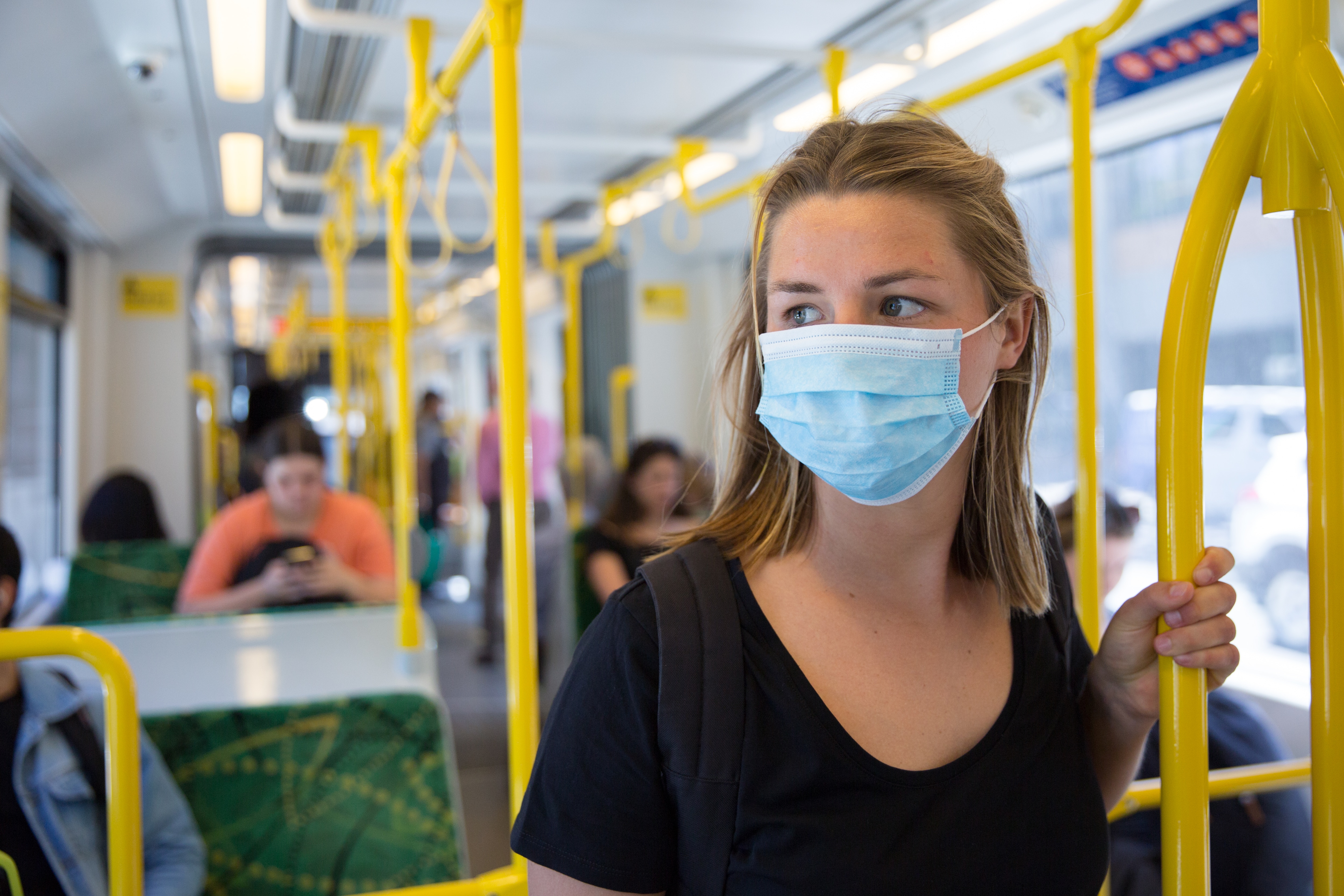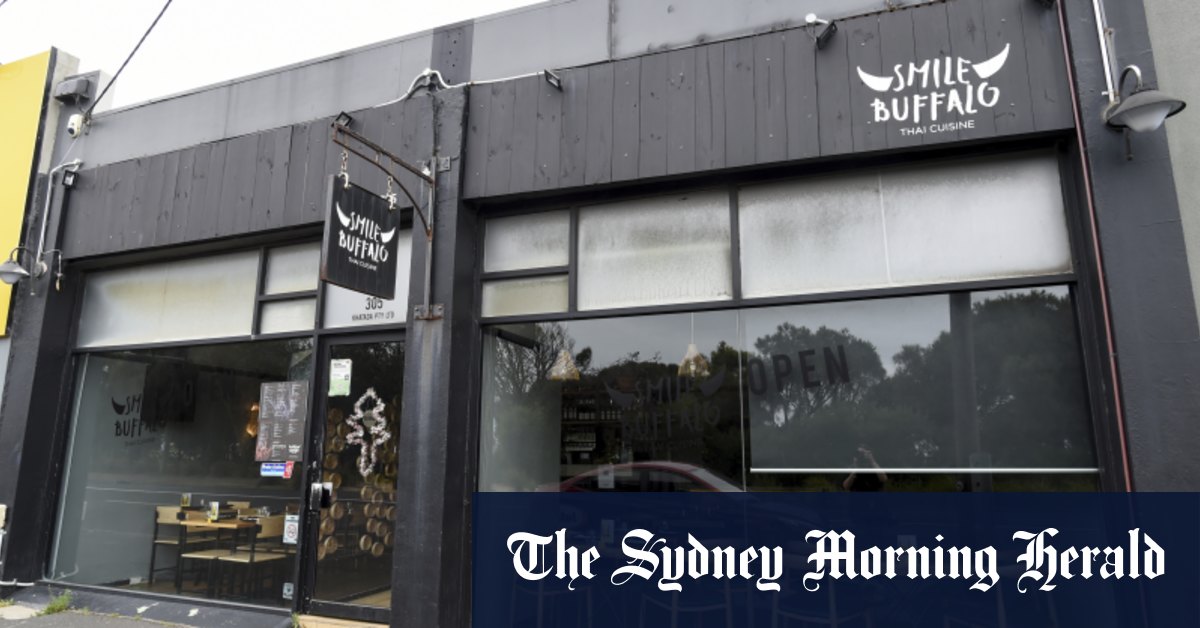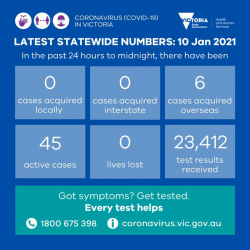You are using an out of date browser. It may not display this or other websites correctly.
You should upgrade or use an alternative browser.
You should upgrade or use an alternative browser.
- Status
- Not open for further replies.
- Joined
- May 22, 2009
- Posts
- 13,270
- Qantas
- Platinum 1
- Oneworld
- Emerald
- Star Alliance
- Gold
This is very far from normal. A shared decision to palliate rather than operate is based on many things amongst them the likelihood that the person will be able to survive the procedure and/or the subsequent period in ICU with any meaningful level of recovery.You do understand that this is normal, don’t you? On a daily basis, the decision to operate or palliate is often made purely on the availability of ICU space. The surgeon won’t be given the opportunity to operate if the ICU in charge won’t take them post-op.
Please show me where decisions to palliate here in Australia are based on availability of ICU space/capacity.
I have never been involved in such a case in 20 plus years of critical care practice in a public hospital.
You do understand that this is normal, don’t you? On a daily basis, the decision to operate or palliate is often made purely on the availability of ICU space. The surgeon won’t be given the opportunity to operate if the ICU in charge won’t take them post-op.
- Joined
- Jan 26, 2011
- Posts
- 30,195
- Qantas
- Platinum
- Virgin
- Red
That’s the same woman who came from Quarantine in Melbourne I believe, and hope so as that’s a known one and isolating.Maleny in QLD has a confirmed case and town is very nervous.. It is all over the media... Many questions and not a lot of answers!!!
Agree completely with Princess Fiona. Haven’t quite made 20 plus years but getting there soon.This is very far from normal. A shared decision to palliate rather than operate is based on many things amongst them the likelihood that the person will be able to survive the procedure and/or the subsequent period in ICU with any meaningful level of recovery.
Please show me where decisions to palliate here in Australia are based on availability of ICU space/capacity.
I have never been involved in such a case in 20 plus years of critical care practice in a public hospital.
lovetravellingoz
Enthusiast
- Joined
- Jul 13, 2006
- Posts
- 12,743
That’s the same woman who came from Quarantine in Melbourne I believe, and hope so as that’s a known one and isolating.
Yes the ones circled in green below were all added to the Qld Exposure Site at 2.29PM today. So isolating and in all likelihood not infectious, even though the highly transmissible strains are thought to have people being infectious for longer.
The exposures are also likely to have only fleeting contacts. In all probability she probably was infected in the UK before flying and so that would give an earlier infected date than her tested date.
As she is with her parents presumably with lots of close and extended contact then if they do not test positive then most likely others in Qld with more fleeting contact would not.
The protocols have been tightened since. Vic moved to the new protocols on 6th Jan (she flew out on 5th Jan), and after Prof Chen made recommendations to the AHHPC they were then recommended up to the National Cabinet who also adopted them by and large and so they have been rolled out nationally, though individual states will have some tweeks.

I have never been involved in such a case in 20 plus years of critical care practice in a public hospital.
This is surprising. Not sure if you specialise in geriatrics or not, but this is extremely common.
lovetravellingoz
Enthusiast
- Joined
- Jul 13, 2006
- Posts
- 12,743
As I posted a some time back I personally (and I am involved with education on HVAC for Public Buildings) avoid public indoor locations (shops, cafes restaurants etc) that use only household room type air-conditioners as they are basically glorified fans that chill or heat air and then blow that re-circulated and dehumidified air around the space often with no or minimal fresh air blended in or exhausted out.
Commercial units will have return air ducting, and fresh air mixed in and air also exhausted out. The fresh air settings should be maximised at present and on commercial units the humidity adjusted. In say a restaurant they would have multiple outlets and inlets. Whereas a restaurant in an old shopping strip might have just the one unit blasting on high speed from one wall.
Larger building will have had systems designed for them. Shopfronts will be a lucky dip often with no real ventilation at all.
Also room refrigerated type systems will dry (dehumidify) the air which can increase the likelihood of transmission.

 www.sydney.edu.au
www.sydney.edu.au

Fans can spread droplets more than 1.5m, and aerosols even further again.
etc

 www.smh.com.au
www.smh.com.au
Commercial units will have return air ducting, and fresh air mixed in and air also exhausted out. The fresh air settings should be maximised at present and on commercial units the humidity adjusted. In say a restaurant they would have multiple outlets and inlets. Whereas a restaurant in an old shopping strip might have just the one unit blasting on high speed from one wall.
Larger building will have had systems designed for them. Shopfronts will be a lucky dip often with no real ventilation at all.
Also room refrigerated type systems will dry (dehumidify) the air which can increase the likelihood of transmission.
‘When there is low humidity, there’s not much water vapor in the air. So the air is very dry and that means when someone coughs, particularly an infectious person, you get aerosolised particles in the air,’ Professor Ward said.
‘When the air is dry, those particles are small, so they can stay suspended for much longer in the air.

Low humidity increases COVID risk; another reason to wear a mask
Weather conditions conducive to the spread of COVID-19, such as drier air, present a challenge to public health. New research from University of Sydney.
New research finds link between COVID-19 and lower humidity
If COVID-19 is a seasonal illness, is Australia’s easing of social distancing restrictions going into winter a good idea?
www1.racgp.org.au
Fans can spread droplets more than 1.5m, and aerosols even further again.
Airflow and seating likely factors in Thai restaurant cluster
The Black Rock restaurant “super-spreading” event at the centre of Victoria’s latest coronavirus outbreak was likely fuelled by the venue’s airflow and seating arrangements, despite the restaurant abiding by density rules.
Eleven of the 37 patrons who dined at the Smile Buffalo Thai restaurant on the night of December 21 tested positive to the virus, after visiting between 7pm and 9.30pm.
Significantly, the group was not all on the same table, nor even in the same area of the restaurant. A staff member also tested positive.
While the identity of the person or people who were infectious with coronavirus that night is still yet to be discovered, the Victorian government now believe that their level of infectivity, as well as seating arrangements and airflow, likely contributed to the transmission of the disease.
Burnet Institute epidemiologist Professor Mike Toole said the 12 coronavirus cases were a mini super-spreading event, but one that would not have made sense nine months ago when it was thought that coronavirus was mostly spread by large droplets.
etc
Airflow and seating likely factors in Thai restaurant cluster
Experts say there needs to be more done to improve air quality in restaurants and other venues.
Last edited:
Which hospital is that. I’d like to keep well away from itThis is surprising. Not sure if you specialise in geriatrics or not, but this is extremely common.
lovetravellingoz
Enthusiast
- Joined
- Jul 13, 2006
- Posts
- 12,743
Maleny in QLD has a confirmed case and town is very nervous.. It is all over the media... Many questions and not a lot of answers!!!
There has been a lot of detail reported throughout the day. In short most unlikely that she will infect anyone. If her parents, who she is now living with and will have had very close and extended contact with, become infected then it would be become of more concern.
Visitors to two Brisbane supermarkets directed to immediately get tested and quarantine
Queensland Health issues an urgent health alert directing anyone who visited two supermarkets in Brisbane's south to immediately get tested and quarantine at home.
No new coronavirus cases in Queensland on first day of Brisbane lockdown
People living in Greater Brisbane have woken to deserted streets this morning as the city endures its first...
Last edited:
drron
Veteran Member
- Joined
- Jul 4, 2002
- Posts
- 37,468
The original claim you made was patients are palliated because ICU beds are not available.I agree with Princes Fiona I have never palliated or have seen patients palliated because of a lack of ICU beds in my 51 years of practice.I have been involved in many discussions with patients and family along with Intensivists about why a particular patient is not suitable for ICU admission but in those cases there were beds available.This is surprising. Not sure if you specialise in geriatrics or not, but this is extremely common.
Now I have been involved in the setting up of 2 Palliative care services.I have made many decisions re the start of palliative care for patients.Somewhat ironically the last week saw probably the highest weekly numbers of patients I along with the palliative care physician have started on terminal care.The family of one patient disagreed,though not the patient,so the discussions involved an oncologist and a radiation specialist as well.
SydneySwan
Established Member
- Joined
- Jan 12, 2014
- Posts
- 4,226
- Qantas
- LT Silver
- Virgin
- Red
Wow! I had no idea that this is how it works. I obviously haven’t been concentrating. I thought everybody did a minimum of 14 days.
So if you arrive with COVID you can potentially leave quarantine after 10 days but if you test positive on day 12 you do 15+ days. If you always test negative you do 14 days.
- Joined
- May 22, 2009
- Posts
- 13,270
- Qantas
- Platinum 1
- Oneworld
- Emerald
- Star Alliance
- Gold
Absolutely not. There is no rationing of health care to elderly Australians based on critical care capacity.This is surprising. Not sure if you specialise in geriatrics or not, but this is extremely common.
It doesn’t happen.
- Joined
- May 22, 2009
- Posts
- 13,270
- Qantas
- Platinum 1
- Oneworld
- Emerald
- Star Alliance
- Gold
In NSW Health you do 14 days minimum Hotel Quarantine regardless of testing positive or negative. The CDNA guidelines for community covid cases should not usurp the mandatory 14 day quarantine for International arrivals.Wow! I had no idea that this is how it works. I obviously haven’t been concentrating. I thought everybody did a minimum of 14 days.
So if you arrive with COVID you can potentially leave quarantine after 10 days but if you test positive on day 12 you do 15+ days. If you always test negative you do 14 days.
This should never be normal.You do understand that this is normal, don’t you? On a daily basis, the decision to operate or palliate is often made purely on the availability of ICU space. The surgeon won’t be given the opportunity to operate if the ICU in charge won’t take them post-op.
Decisions to operate or palliate are done based on the patients best interests in mind. The availability of local ICU resources may be an issue, but if the patient will truley benefit, then further ICU resources can be sought inside of the health district (say another local hospital), outside of health system (private vs public), intrastate (tertiary centres), interstate and even internationally. If the patient is too unstable to be moved, then an alternative, more stable patient can be moved. I have been involved in all of these processes.
Only when there is no longer available resources (ICU bed, ICU nurse, ICU doc, ventilators, drugs, allied health staff) which may happen in pandemic surge, mass casualty, a national crisis such as armed conflict will health rationing within our health system be considered and potentially appropriate.
TM
The original claim you made was patients are palliated because ICU beds are not available.I agree with Princes Fiona I have never palliated or have seen patients palliated because of a lack of ICU beds in my 51 years of practice.I have been involved in many discussions with patients and family along with Intensivists about why a particular patient is not suitable for ICU admission but in those cases there were beds available.
Yes, sorry, now I’ve read how I worded that, I can see I did it poorly. Rushing to get on the train while managing my iPhone and mask.
While not so much a case of ICU being “full” (which I seem to have implied), we will certainly elect to palliate rather than operate for somebody who had a good chance of survival considering the ongoing impact to the critical care system. Realistically, we could keep everyone going forever, but at some point it’s not viable to do so.
I standby my earlier position that many of those who died in Melbourne nursing homes could have survived if they were moved from the facility into acute care in hospital, but this wasn’t done
Absolutely not. There is no rationing of health care to elderly Australians based on critical care capacity.
It doesn’t happen.
Again, I apologise for my poor wording, but that’s not entirely correct. I was in the middle of a fairly heated discussion at RPA recently where ICU wasn’t prepared to accept an 88 year old who needed an emergency end colostomy due expected recovery constraints. It ultimately did occur, and the patient has now been discharged and has returned to independent living. However the outcome that was being pushed was to allow them to pass overnight.
Read our AFF credit card guides and start earning more points now.
AFF Supporters can remove this and all advertisements
SydneySwan
Established Member
- Joined
- Jan 12, 2014
- Posts
- 4,226
- Qantas
- LT Silver
- Virgin
- Red
So the lady in the question would have done 14 days had she arrived in Sydney but because she arrived in Melbourne different rules were applied. Is that correct? She came from the UK I think.In NSW Health you do 14 days minimum Hotel Quarantine regardless of testing positive or negative. The CDNA guidelines for community covid cases should not usurp the mandatory 14 day quarantine for International arrivals.
lovetravellingoz
Enthusiast
- Joined
- Jul 13, 2006
- Posts
- 12,743
Wow! I had no idea that this is how it works. I obviously haven’t been concentrating. I thought everybody did a minimum of 14 days.
So if you arrive with COVID you can potentially leave quarantine after 10 days but if you test positive on day 12 you do 15+ days. If you always test negative you do 14 days.
So the lady in the question would have done 14 days had she arrived in Sydney but because she arrived in Melbourne different rules were applied. Is that correct? She came from the UK I think.
This explanation from Dr Chant provides greater detail and goes through various scenarios both before and after the new requirements and references the current case under discussion:
Why can COVID-19 cases be released from isolation after 10 days? A short explainer
By Natassia Chrysanthos
There has been some concern and confusion since this morning's revelation that a positive COVID-19 case was released from isolation in Victoria after just 10 days, and without a negative test.NSW Chief Health Officer Kerry Chant has explained why that was the case. Essentially, a 14-day quarantine period applies to people who may have been exposed to the virus (such as close contacts or returned travellers) because that is the general incubation period for infection to reveal itself.
But when someone actually has COVID-19, a different isolation requirement sets in. The guidelines were established by the Communicable Diseases Network Australia, and they change depending on whether the person had a mild or serious case.
The returned traveller reported this morning, who first arrived in Victoria and travelled to Queensland, had a mild case of COVID-19. Dr Chant explained what rules applied and why:
"The guidelines require that you have 10 days in isolation after your [COVID-19] symptoms. So you flip from quarantining 14 days to [minimum 10 days] when you are a case.
"For mild cases you were able to be discharged if you were 10 days from your symptom onset and you had been free of symptoms for 72 hours before.
"The reason that was necessary is that we found cases where you can detect the virus in people's noses and throats, three months and even four months after the infection. What we're also observing is sometimes they may be negative at a certain point, but then you get a runny nose or something, and then if you get tested at that time, you can sometimes have the remnants of the virus come out.
"Because of that, you would have people permanently locked up. That's why the Communicable Disease Network looked at the evidence. That was that people are most infectious in that beginning bit, the pre-symptomatic time-frame."
That explains why some people can be released after 10 days so long as they have been free of symptoms for 72 hours. It also explains why a negative test was not required before cases left isolation and entered the community - a positive test at that later stage does not necessarily mean they are still infectious.
"Obviously there is a different set of criteria if you have been hospitalised, there are much more stringent guidelines," Dr Chant said. That different set of criteria also applies to people who were in intensive care or have had more intensive lung involvement.
Of course, these requirements have now shifted in light of the new mutant strains appearing overseas and arriving on Australian shores. "The Communicable Diseases Network Australia guidelines have been renewed and we will further discuss that situation today," Dr Chant said.
But in short: the minimum isolation period for positive mild cases has been lengthened to 14 days and a negative test will be required before people enter the community. Those who still test positive after their symptoms have passed will be assessed on a case-by-case basis.
"In NSW we've now re-instituted PCR testing on all negatives, but we are also making sure that we have the timely genetic genome sequencing, so again that can inform the decision-making," Dr Chant said.
"If you are negative, you will be able to [leave isolation], but we will extend the period to 14 days, not 10 days, as a precaution. We will test you before you go out and if you're negative, we will let you go out.
"If you are positive, we have a case-by-case assessment with experts who will do things like [assess] whether you have antibodies in response, whether the PCR marker is showing whether you're infectious," she said.
Such measures will alter the way that mild COVID-19 cases, such as the woman who travelled to Queensland from Victoria, will be treated in the future.
Coronavirus as it happened: Greater Brisbane enters lockdown; Woman travelled from Victoria to Queensland with UK COVID strain
Greater Brisbane has woken up to its first day of a three-day lockdown, after a hotel worker was in the community while infected with the virulent UK strain of COVID-19. Federal and state authorities have tightened protocols for international arrivals to protect against the mutant strain.
Last edited:
lovetravellingoz
Enthusiast
- Joined
- Jul 13, 2006
- Posts
- 12,743
The only problem I see with masks it may give some a false confidence when entering a crowded room thinking "well I am wearing a mask" I will be fine. Instead of get me the hell out of here its to crowded for me.Mask wearing may reduce infection but the evidence is very weak.The strongest results from trials very rarely reach significance and often when things like social distancing and hand washing are taken into account there is often no difference.
More evidence if you wear the N95 mask all the time.
A summary of the evidence in one Medical journal.
- Status
- Not open for further replies.
Become an AFF member!
Join Australian Frequent Flyer (AFF) for free and unlock insider tips, exclusive deals, and global meetups with 65,000+ frequent flyers.AFF members can also access our Frequent Flyer Training courses, and upgrade to Fast-track your way to expert traveller status and unlock even more exclusive discounts!

AFF forum abbreviations
Wondering about Y, J or any of the other abbreviations used on our forum?Check out our guide to common AFF acronyms & abbreviations.
Currently Active Users
Total: 1,617 (members: 12, guests: 1,605)















